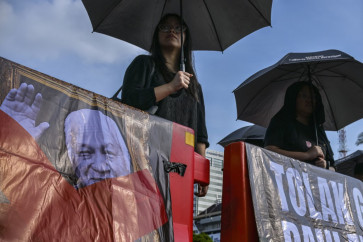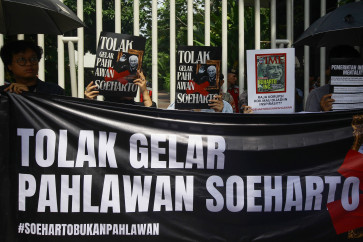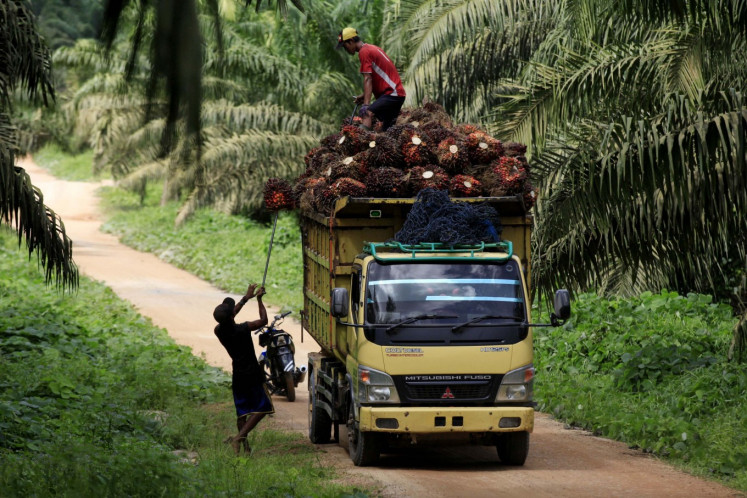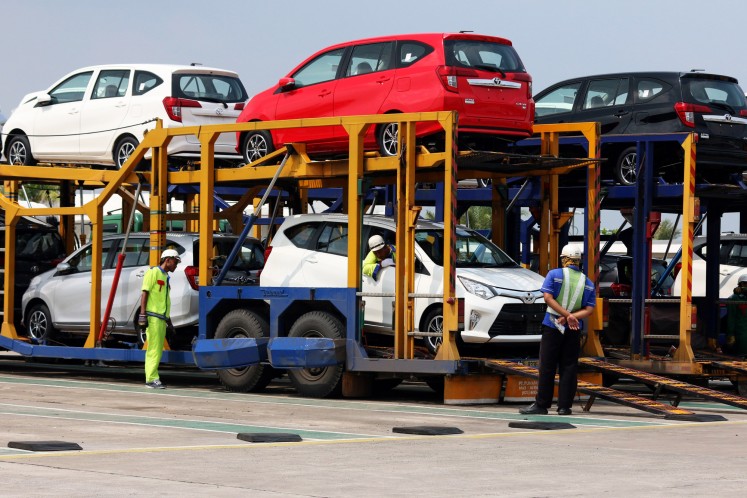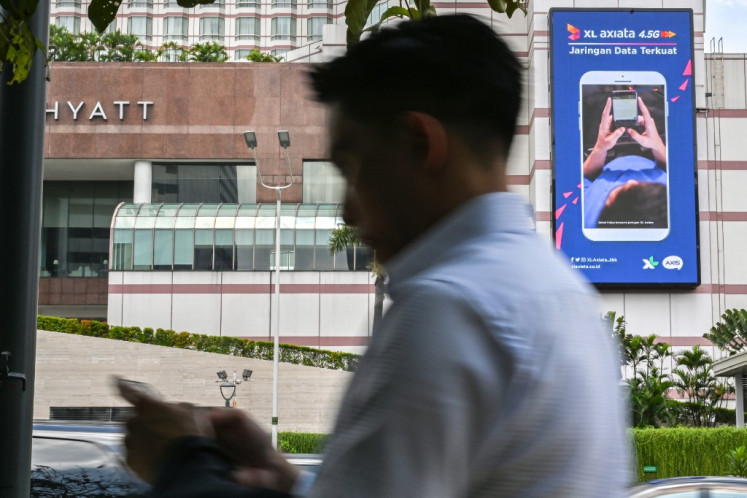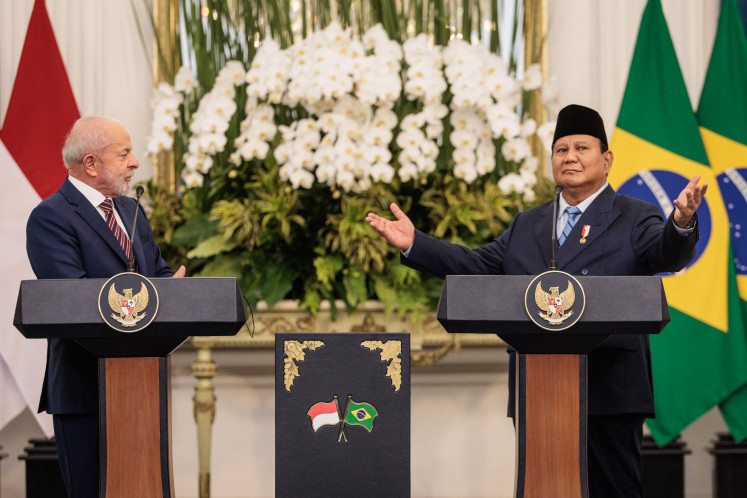Popular Reads
Top Results
Can't find what you're looking for?
View all search resultsPopular Reads
Top Results
Can't find what you're looking for?
View all search resultsTime to communicate a strategy on Indonesia and beyond
No return visit yet to Indonesia, but a visit to India earlier this week by US President Barack Obama may signify that South Asia is, like Southeast Asia, finally getting some well-deserved US attention as part of the so-called American rebalance â or what was once known as the âpivotâ â to Asia
Change text size
Gift Premium Articles
to Anyone
N
o return visit yet to Indonesia, but a visit to India earlier this week by US President Barack Obama may signify that South Asia is, like Southeast Asia, finally getting some well-deserved US attention as part of the so-called American rebalance ' or what was once known as the 'pivot' ' to Asia.
That's a welcome change as America and America's policymakers wake up to the obvious, namely that there is more to Asia than China and that an Asia strategy is more than a grab bag of programs seeking to match China's efforts.
Yet, in his State of the Union address to the American public last week, Obama gave short shrift to Asia, while proclaiming past successes and outlining an agenda for further improving the US economy. 'The shadow of crisis has passed,' he declared, 'and the state of the union is strong.'
Pointedly, the US president chose not to use his 70-minute, annual address, to explain what can be a critical part of his economic agenda. That is, increased engagement and strengthened trade relations with the entire Asia-Pacific region, including nations, such as India, that rarely make the US headlines.
Too often, East Asia alone has seemed the predominant focus of the US policy pivot eastward. Perhaps, it is understandable that there was no mention of Indonesia given all that Obama sought to cover, but there also was no mention even of his then upcoming visit to India. Americans may well have wondered where their president had gone so soon after concluding his State of the Union address.
Now, fresh from India ' the first time a sitting US president has visited that nation twice ' Obama has some easy explaining to do when he lands back in Washington. Indeed, a real opportunity for expanded engagement is at hand, as ties improve between the United States, the world's oldest democracy, and India, the world's largest democracy.
US State Department statistics about the benefits of US-India trade provide a rationale and a context for why Obama was back in Asia and in India in particular:
'¢ US-India bilateral trade expanded from US$19 billion in 2000 to $95 billion in 2013, with US goods exports to India totaling $35 billion, supporting an estimated 168,000 US jobs;
'¢ Cumulative Indian investment in the US totaled $9 billion in 2012, supporting 100,000 jobs;
'¢ More than 850,000 Indians visited the US in 2013, and more than one million Americans visited India, the largest group of international tourists; and
'¢ Approximately 100,000 Indian students, the second-largest group of foreign students, studied in the US for the 2012-13 academic year, contributing more than $3 billion to the US economy.
With the International Monetary Fund expecting India's economy to grow by 6.3 percent in 2015 and by 6.5 percent in 2016, outpacing that of China, there is good reason for the US pivot to head southward, to India. These figures will grow if reforms take hold in India.
But India should be only one part of comprehensive US engagement with an Asia-Pacific region that is wary of China's growing assertiveness, particularly in the South China Sea. China is already engaged across the region, economically of course, but also through development assistance, cultural exchanges and educational programs.
What might an expanded US pivot to all Asia ' a rebalance of the rebalance if you will ' include?
First, the US must embrace a 'business pivot' that goes beyond the large China marketplace and that looks to opportunities that exist in South Asia and Southeast Asia. Already, US investment in Southeast Asia surpasses that in all four BRIC nations ' Brazil, Russia, India and China ' and can be built upon.
This would entail a concerted effort to "geographically rebalance" US efforts across the region, with a particular emphasis on strengthening economic ties with India and Indonesia among others.
Longtime allies with which the US has defense ties, including Japan, the Philippines and South Korea, must also be reassured that the United States is here to stay.
Second, the Obama administration and US Congress must work to advance trade and commercial efforts that work for all involved. A bipartisan effort is needed to ensure adequate resources for a trade policy and a Foreign Commercial Service that benefits small businesses, not just big multinationals.
Additionally, Washington must also set an example for the rest of the world by ensuring that intellectual property rights are protected, and that tax policies do not discourage business success by its own citizens, particularly American entrepreneurs, whether working directly in any of the ASEAN countries or elsewhere in Asia or exporting product from America.
Third, US companies must also act responsibly in every market they operate. This may well entail going beyond the letter of the law in such emerging markets in Southeast and South Asia as Bangladesh, Cambodia, Myanmar and Sri Lanka, where regulatory deficiencies make it challenging to operate, but where US investment and good practices can have a significant impact.
A central benefit of peace and stability in Asia ' a stated goal of the US rebalance to the region ' is greater commercial opportunities throughout Asia. Trade and economic ties can be part of the means to a strategic solution in the region, and not just the ends.
State visits to India, State of the Union addresses and participation in Asia's annual array of summits may provide for beautiful photos, but what really matters is the hard work that follows.
America certainly matters to Asia, but building the support of the American people and Congress for strengthened economic and trade ties with not just India but the entire Asia-Pacific region ' Indonesia and the rest of the soon-to-be ASEAN Economic Community included ' will also require US leaders who are serious about also explaining and showing that Asia matters to America.
_____________________________
Curtis S. Chin, a former US ambassador to the Asian Development Bank, is a managing director of advisory firm RiverPeak Group. Jose B. Collazo is a Southeast Asia analyst and an associate of River Peak Group


